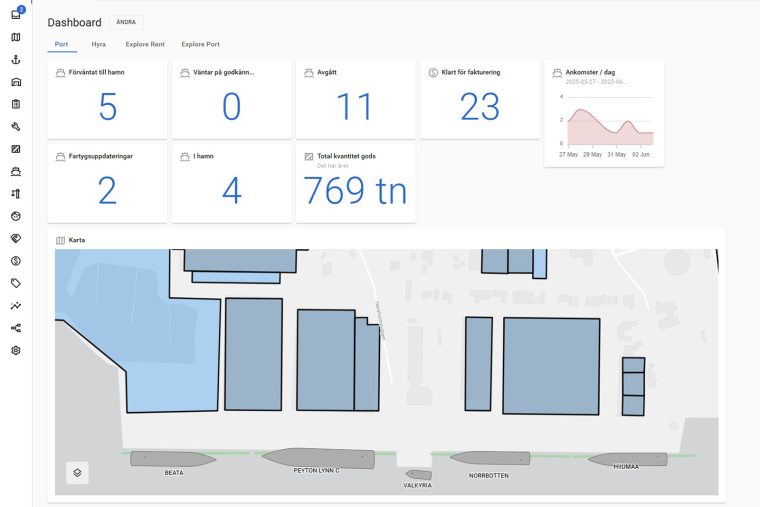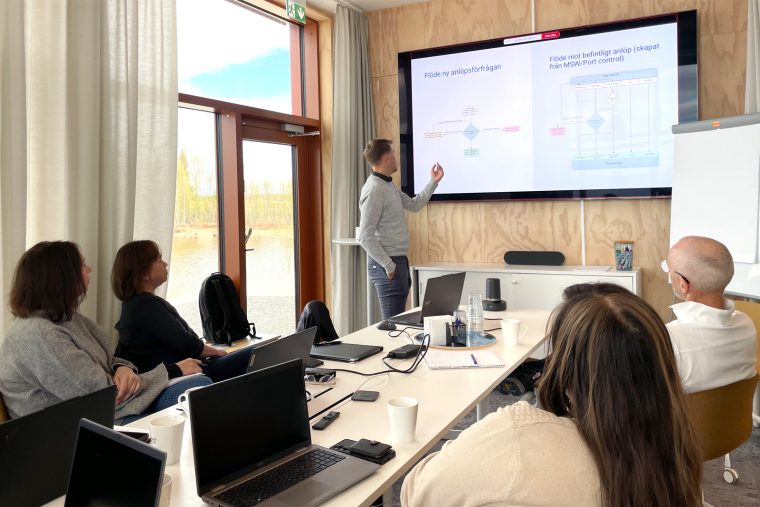Ship calls to the ports of Piteå and Luleå are now being digitalized

Mikael Lindgren and Karin Lindholm.
In June, the ports of Piteå and Luleå will launch Port – the platform that digitizes ship calls. The launch marks a move towards more efficient traffic flows and reduced environmental impact in these growing ports.
Each ship call currently involves a wide range of stakeholders exchanging large amounts of information from arrival to departure. The port management system gives customers, ship agents, and other partners access to the same real-time information about ship calls and service requests. Improved traffic flow planning to and from the ports reduces bottlenecks and leads to a more environmentally friendly logistics chain.
“We’re working towards just-in-time operations, where vessels plan their arrival and adjust their speed to minimize waiting times and fuel consumption. This is an important step towards a greener approach in maritime shipping while also improving service and safety,” says Karin Lindholm, Enterprise Architect at the Port of Luleå.
Currently, traffic information and service orders are updated in different places. With the port management system, users gain access to all relevant ship call information, including scheduled times and pilot and tugboat orders. The platform also allows for digital ordering of port services such as mooring and freshwater supply, with automatic confirmations and forwarding to the correct service providers. Mikael Lindgren, IT Strategist at the Port of Piteå, who is working on implementing the system, says this strengthens the ports’ digital development.
“Port makes it easier to plan, collaborate, and act – regardless of where you are in the transport chain. It improves our internal administration, follow-up processes, and the customer experience,” he says.
Both the Port of Luleå and the Port of Piteå are expected to grow in the coming years and handle increasing vessel traffic. The level of digitalization in maritime shipping is still relatively low, which makes this a significant milestone for the digital transformation of Swedish ports.
“The introduction of the port management system is the starting point for moving into the future. It’s a concrete example of how we can improve our operations together while also making things easier for everyone working with us,” say Mikael Lindgren and Karin Lindholm.
Facts About the Digital Ship Call Initiative
The implementation of the Port digital port management system means manual routines are being replaced with digital ones. Regardless of whether you’re calling at the Port of Luleå or the Port of Piteå, you’ll have access to the same interface and functionality. The initiative at the Ports of Piteå and Luleå is part of the Vinnova program System Demonstrator Smart Ship Calls, where actors in the maritime sector are working to create more efficient port calls through digitalization.

An example of what the Port system looks like for a logged-in user.

In connection with the launch of the new Port system, an introduction and training session was held for agents from various shipping companies at the Port of Piteå’s office on Farleden 54.